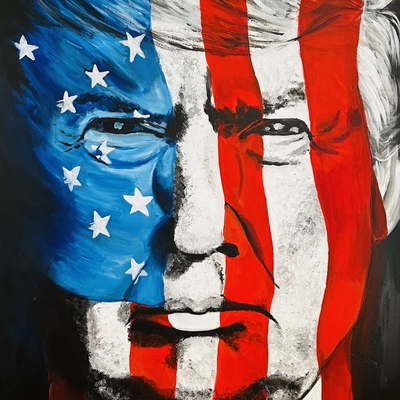Stay informed on the latest Truth Social posts from Donald Trump (@realDonaldTrump) without the doomscrolling. Consider it a public service for your mental health. (Why?)
- All tariffs are currently in effect.
- An Appeals Court ruling to remove tariffs is incorrect and highly partisan.
- The United States will ultimately prevail in the tariff dispute.
- Removing these tariffs would be a total disaster for the Country.
- Removing these tariffs would make the U.S. financially weak.
- The U.S.A. will no longer tolerate enormous Trade Deficits and unfair Tariffs and Non Tariff Trade Barriers imposed by other Countries.
- The Appeals Court Decision, if allowed to stand, would literally destroy the United States of America.
- Tariffs are the best tool to help American Workers and support Companies that produce great MADE IN AMERICA products.
- Past politicians were uncaring and unwise for allowing tariffs to be used against the U.S.
- Tariffs will be used, with the help of the United States Supreme Court, to benefit the Nation and Make America Rich, Strong, and Powerful Again!
The post directly addresses tariffs and trade policy, asserting their continuation and emphasizing their critical role in the nation's financial strength. The strong rhetoric concerning potential 'disaster' if tariffs are removed, coupled with the mention of ongoing legal challenges (Appeals Court, Supreme Court), introduces significant uncertainty and potential policy shifts that could affect corporate earnings, supply chains, and investor sentiment across S&P 500 companies, particularly those involved in international trade or manufacturing. This sustained focus on tariffs is a key policy area for businesses.
The post reaffirms a strong protectionist trade stance against 'other Countries, friend or foe,' challenging their trade practices. This indicates a potential for continued or escalated economic and diplomatic friction through trade disputes, but it does not explicitly reference military threats, ultimatums, or direct international conflict escalation. The risk is primarily economic and diplomatic, not military.
- Commodities: Gold (XAU) could see moderate safe-haven buying if trade tensions escalate, reflecting increased economic uncertainty. Oil (WTI) and industrial metals like Copper may experience pressure if the protectionist stance leads to expectations of a global trade slowdown affecting demand. Short-Term Watchlist: XAU/USD price action, any specific trade actions against other nations. Medium-Term Focus: Global manufacturing PMIs, USD trajectory, inflation trends.
- Currencies (Forex): The US Dollar Index (DXY) could exhibit strength due to the assertion of national economic policy, or conversely, face pressure if trade disputes negatively impact global growth and risk appetite. Currencies of nations frequently targeted by tariffs (e.g., USDCNH) would be particularly sensitive. Short-Term Watchlist: Fed speakers, Treasury yields, global risk sentiment. Medium-Term Focus: Central bank divergence, global growth differentials.
- Global Equities: S&P 500 and other major global equity markets may experience headwinds due to prolonged trade policy uncertainty impacting corporate profits, supply chains, and investor confidence. Sectors such as manufacturing, agriculture, and retail, which are sensitive to trade costs and consumer spending, are likely to be most affected. Short-Term Watchlist: Futures open, VIX, performance of trade-sensitive sectors (e.g., industrials, materials). Medium-Term Focus: Earnings revisions, macro data, global capital flows.
- Fixed Income (Bonds): US 10Y and 2Y Treasury yields could decline as a flight to safety if trade policy uncertainty intensifies, or potentially rise if protectionist measures are seen as inflationary or fiscally concerning. Credit spreads may widen if market stress increases. Short-Term Watchlist: UST 10Y yield levels, credit ETF flows. Medium-Term Focus: Fed policy expectations, fiscal concerns, debt ceiling rhetoric.
- Volatility / Derivatives: The VIX could experience a moderate spike due to increased policy uncertainty surrounding trade and the potential for legal challenges to extend. Options positioning may reflect increased hedging demand. Short-Term Watchlist: VIX levels versus VIX futures term structure. Medium-Term Focus: Volatility regime shifts, macro policy uncertainty, systemic tail risk.
- Crypto / Digital Assets: Bitcoin (BTC) may behave as a risk-on asset, potentially facing pressure if global risk sentiment deteriorates due to trade tensions, or as a macro hedge if traditional markets experience significant turmoil. Its correlation with tech stocks and broader liquidity cycles remains key. Short-Term Watchlist: BTC/USD price action, Coinbase order book activity. Medium-Term Focus: Regulatory news, macro liquidity backdrop, stablecoin flows.
- Cross-Asset Correlations and Systemic Risk: Market participants will closely monitor for shifts in traditional asset correlations, particularly between equities and bonds, as trade policy uncertainty could introduce new systemic risks. Signs of liquidity stress in trade-sensitive sectors or emerging markets would be important indicators. Short-Term Watchlist: MOVE index, junk bond ETFs, gold/USD co-movement. Medium-Term Focus: Central bank intervention, market plumbing stress, shadow banking risks.
- Retail Sentiment / Market Psychology: The strong, nationalistic, and pro-domestic industry rhetoric could resonate with retail investors, potentially encouraging speculation in companies perceived to benefit from protectionist policies or those aligned with 'Made in America' themes. Short-Term Watchlist: Social media trends around specific sectors or companies, retail trading volumes. Medium-Term Focus: Social media influence on market structure, potential for coordinated retail pushes, policy/regulatory scrutiny on retail trading behavior.

